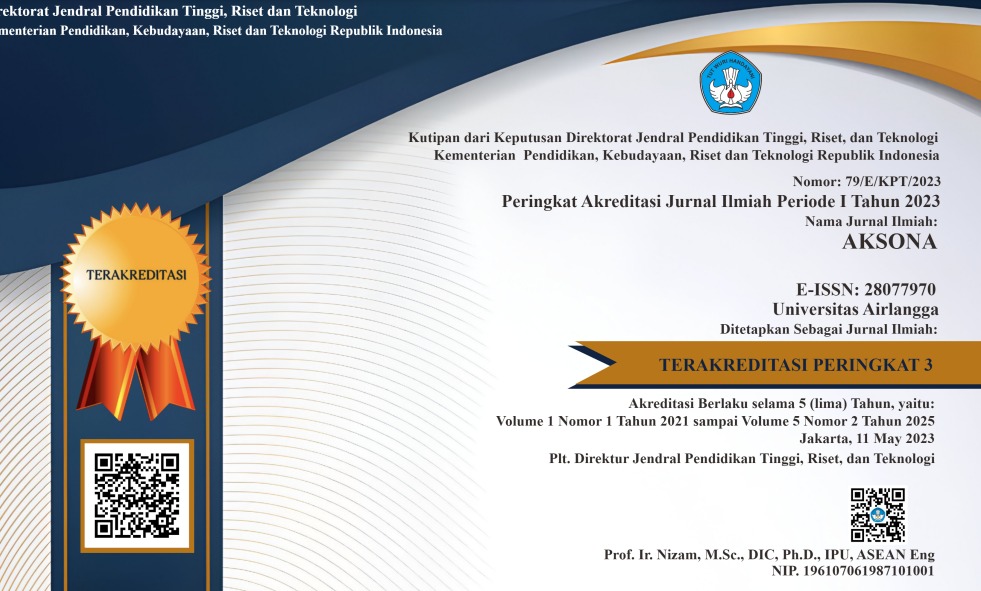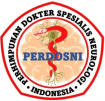Partial Transvenous Coil Embolization with Significant Clinical Improvement in Patient with Indirect Carotid Cavernous Fistula
Downloads
Highlight:
- CCF is a rare vascular malformation with challenging management.
- Partial transvenous embolization is quite effective as an alternative therapy for indirect CCF type D.
ABSTRACT
Introduction: An indirect carotid-cavernous fistula (CCF) is an abnormal connection between the internal or external carotid artery and the cavernous sinus. The optic, trochlear, abducens, and trigeminal nerves are located in the cavernous sinus. Head Computed Tomography (CT) scan, Magnetic Resonance Imaging (MRI), and Cerebral Angiography are some imaging modalities used to establish and diagnose carotid-cavernous fistula. Endovascular intervention can be performed with trans-arterial or trans-venous access. In some cases, complete embolization by endovascular treatment is not possible because of difficult angioarchitecture. Case: A 61-year-old female reported having pain in her left eye (numerical rating scale was 6). The left eye was bulging, reddish, ptosis, and unable to move. The patient felt double vision when opening both eyes, complained of intermittent stabbing headaches on the left side, and heard a bruit from the left side of the head. The cerebral angiography showed bilateral indirect CCF Barrow type D. The procedure involved partial transvenous embolization with coiling. The angiographic evaluation showed partial occlusion, and residual flow from the fistula was still visible on angiography. There was a significant clinical improvement several days after the procedure and a five-month follow-up. Conclusion: This case report showed that partial targeted transvenous embolization is quite effective in indirect CCF when complete embolization is impossible.
Nosko MG. Carotid-cavernous fistula: Practice Essentials, Prognosis. Medscape. 2021.
Hartono R, Sani AF. Intractable headache akibat fistula karotis-kavernosus indirek bilateral: Suatu laporan kasus. Aksona. 2021;1(1):7–13.
Henderson AD, Miller NR. Carotid-cavernous fistula: current concepts in aetiology, investigation, and management. Eye. 2018; 32(2): 164-72.
Bakan AA, Alkan A, Kurtcan S, Aralaşmak S, Tokdemir S, Mehdi E, et al. Cavernous sinus: A comprehensive review of its anatomy, pathologic conditions, and imaging features. Clin Neuroradiol. 2015; 25(2): 109–25.
Williams ZR. Carotid-cavernous fistulae: A review of clinical presentation, therapeutic options, and visual prognosis. Int Ophthalmol Clin. 2018; 58(2): 271–94.
SMF Ilmu Bedah Saraf. Caarotid cavernous fistula (CCF). In: Panduan Praktik Klinis. RSUD Dr. Soetomo Surabaya; 2015. p. 1–6.
Barrow DL, Spector RH, Braun IF, Landman JA, Tindall SC, Tindal GT. Classification and treatment of spontaneous carotid-cavernous sinus fistulas. J Neurosurg. 1985; 62(2): 248–56.
Miller TR, Shivashankar R, Jindal G, Gandhi D. Carotid cavernous fistula. In: Neurovascular Imaging. New York, NY: Springer New York; 2016. p. 657–82.
Toro J, Burbano LE, Reyes S, Barreras P. Cavernous sinus syndrome: Need for early diagnosis. BMJ Case Rep. 2015; 2015(1):bcr2014206999.
Koenigsberg RA. Carotid-cavernous fistula imaging: Practice essentials, computed tomography, magnetic resonance imaging. Medscape. 2020.
Gemmete JJ, Chaudhary N, Pandey A, Ansari S. Treatment of carotid cavernous fistulas. Curr Treat Options Neurol. 2010; 12(1): 43–53.
Korkmazer B, Kocak B, Tureci E, Civan Islak, Kocer N, Kizilkilik O. Endovascular treatment of carotid cavernous sinus fistula: A systematic review. World J Radiol. 2013; 5(4): 143-155.
Texakalidis P, Tzoumas A, Xenos D, Rivet DJ, Reavey-Cantwell J. Carotid cavernous fistula (CCF) treatment approaches: A systematic literature review and meta-analysis of transarterial and transvenous embolization for direct and indirect CCFs. Clin Neurol Neurosurg 2021;204: 106601.
Ducruet AF, Albuquerque FC, Crowley RW, McDougall CG. The evolution of endovascular treatment of carotid cavernous fistulas: A single-center experience. World Neurosurg 2013; 80(5): 538–48.
Samaniego EA, Martínez-Galdámez M, Abdo G. Treatment of direct carotid-cavernous fistulas with a double lumen balloon. J Neurointerv Surg 2016; 8(5): 531–35.
Permana G, Suroto N, Al Fauzi A. Clinical improvement of patients with endovascular treatment in the traumatic carotid-cavernous fistula. Asian J Neurosurg 2021;16(2): 376-80.
Kohli GS, Patel BC. Carotid cavernous fistula. StatPearls Publishing; 2022.
Gasparian SA, Chalam K V. Successful repair of spontaneous indirect bilateral carotid-cavernous fistula with coil embolization. J Surg Case Reports. 2021; 2021(4): 1–3.
Copyright (c) 2022 Muh. Wildan Yahya, Achmad Firdaus Sani, Dedy Kurniawan, Mohammad Saiful Ardhi

This work is licensed under a Creative Commons Attribution-ShareAlike 4.0 International License.





















